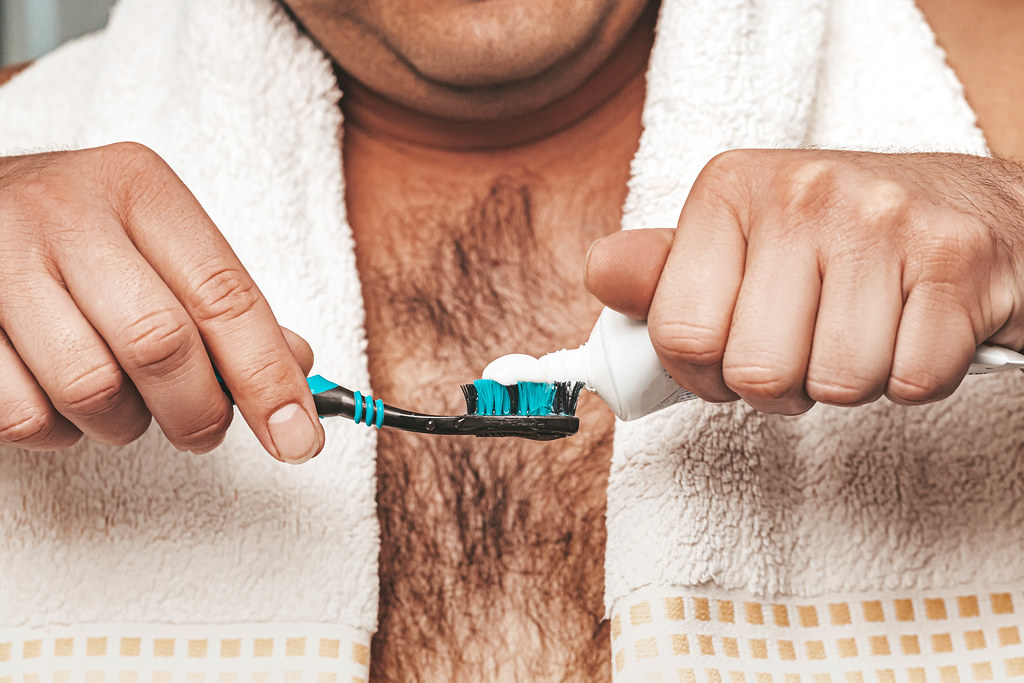
Do you care for your teeth and gums enough? If you do, you can avoid those unnecessary dentist visits. However, not knowing how to care for your teeth and gums best can often lead to problems. Tooth decay, gum infections and diseases of different kinds are very common. The simplest of things, including brushing and flossing, can make big differences when done right.
For people who don’t get their brushing and flossing techniques right, it will not matter how often they do it. Also, for people who get this right, brushing twice and flossing once a day will be good enough. So, it is important to develop the right teeth and gum cleaning habits. Read below to find out just what you need to get these habits right:
Teeth and Gums Brushing Tips
Firstly, it is important to brush your teeth twice a day. Do this 30 minute to 1-hour after a big meal. Brushing your teeth before going to bed and after breakfast are the best times to do it. It will remove all that plaque and that layer of bacteria that will otherwise never go away. Also, these bacteria and plaque are what create cavities through their acidic nature. Make sure to:
- Get a pea-sized dab of fluoride toothpaste on your toothbrush. Make sure to use a soft brush. Go medium if you really want but necessarily avoid the hard ones.
- Brush your teeth with the brush at a 45-degree angle to the gum line.
- Move the brush on the teeth in circular motions. For electric brushes, hold them at the same angle on your teeth and gum line. Think of cleaning one tooth or a couple of teeth at a time. Spend about 5 seconds on every tooth. Do not press the brush too hard.
- Make sure the bristles of the brush reach the spaces between teeth. Focus on the chewing surface and also the back teeth. Ensure that your toothbrush gets in all crevices and grooves.
- It is often best to start from the back teeth, both upper and lower. Also, make sure to run the toothbrush very softly on your tongue and upper mouth walls.
- Rinse with normal-temperature clean water or mouthwash after brushing your teeth for a couple of minutes. Replace your toothbrush every three months.
Teeth Flossing Tips You Need to Know
First, don’t think that if you brush twice a day, you are not with teeth care. You also need to floss your teeth. Often, food particles get stuck inside the teeth. From there, they can cause cavities that lead to tooth decay. Usually, the major reason for needing dental dentures, crowns, bridges or implants is tooth decay. Make sure to:
- Get about a 15-18-inch strip of floss to start the process.
- We recommend winding the floss on the middle finger of each hand. However, some people will find it easier on the index finger.
- Start flossing from the top front teeth first and then move to the bottom ones. Use your preferred finger action to get the floss between your teeth. However, make sure not to let the floss get into your gums. It will cause bleeding gums.
- Move it both up and around the gum line and also up and down while in the between teeth spaces. It should look like a C-shape around the tooth that you are flossing. Make sure to get flossing between all teeth and also behind the back teeth. It will take some time, but it will be time well spent.
- As you go along, make sure to bring the clean floss forward winding away the used one on one of your fingers. It is a good idea to use fluoride mouthwash right after flossing.
How to Rinse Teeth and Gum Best?
The last part of your daily home oral care is to rinse the teeth and the gums. What you need is a mouthwash. However, you need to be specific about your mouthwash selection as well.
- Rinse with an antiseptic mouthwash after teeth cleaning and every meal. This is what we also call antibacterial mouthwash. It will help kill away all the plaque-causing bacteria that might lead to bad breath and early gum disease.
- It is a good idea to use fluoride mouthwashes. These will prolong tooth life by preventing tooth decay. Some mouthwashes have both fluoride and antibacterial properties. Get those.
- Make sure to juggle around the mouthwash inside your mouth for anywhere between 40-60 seconds. Using mouthwash before or after brushing and flossing works the same. Make sure to mouthwash at least once during the day after that big meal.
Eat the Right Foods for the Best Oral Health
Foods come in different shapes and forms. Some are good for your oral and body health, some are not. Acidic foods are generally not so good when it comes to teeth and gum health. Make sure to avoid:
- Hard longer lasting candies, pies, cookies and cakes.
- Any sugar-filled bubble gums or chews.
- Breadsticks, chips and crackers.
- Dried foods that tend to stick inside the mouth on the teeth.
These are all tempting foods. However, if you want your oral health to last longer, make sure to eat fresh fruits and vegetables more than these options.
Visiting the Dentist
Dental checkups are pretty necessary. If you want to avoid too frequent dentist visits, make sure to visit at regular intervals. Visiting the dentist at least once a year is a must. Every six months is the best when you don’t have any problems. Professional dentists will check your oral health. Advise on the best oral care products including toothpaste and mouthwashes.
